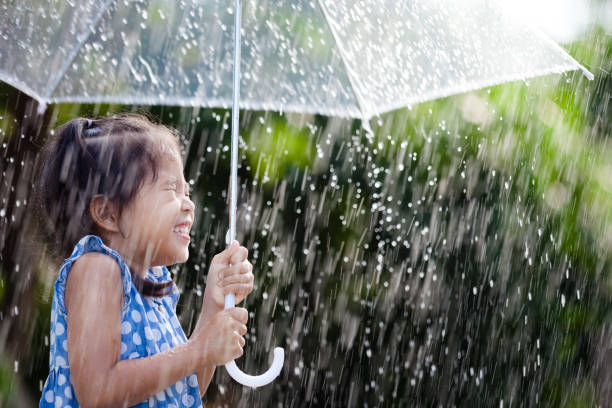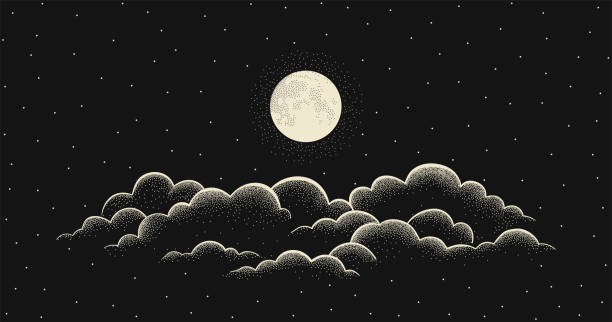How To Describe Rain In Writing (In A Poetic Way- 2024)
How To Describe Rain In Writing
How To Describe Rain In Writing: Describing rain in writing is akin to capturing the essence of a timeless and ever-evocative phenomenon that has fascinated poets, novelists, and storytellers for centuries.
Rain, in its many forms and moods, can be a powerful narrative device, setting the stage, conveying emotions, and mirroring the complexities of human experience.
In this guide, we will explore the art of painting rain with words, delving into the sensory language that allows writers to immerse readers in the beauty and drama of a rain-soaked scene.
From sight and sound to touch, smell, and taste, we will dissect the many dimensions of rain’s sensory language and its capacity to create mood, atmosphere, and profound emotional resonance.
Whether you’re a seasoned writer or just beginning your literary journey, this exploration of how to describe rain in writing will equip you with the tools to harness the poetic potential of this natural phenomenon and infuse your stories with its captivating magic.
How To Describe Rain In Writing
Describing rain in writing involves using vivid and evocative language to paint a picture in the reader’s mind. Here’s a step-by-step process on How To Describe Rain In Writing:
Setting the Scene
Start by setting the scene and creating the right atmosphere. Describe the location and time of day. Is it a city street, a quiet forest, or a coastal town? Is it daytime or night? This contextual information helps the reader envision the rain more effectively.
Select the Right Words
Use descriptive adjectives, adverbs, and verbs to convey the characteristics of the rain. Choose words that evoke the senses. For instance, you can use words like “gentle,” “drizzling,” “torrential,” “pattering,” “incessant,” or “misty” to describe the rain.
Sensory Imagery
Engage the reader’s senses. Describe how the rain feels, sounds, smells, and looks. Does it feel cool and refreshing on the skin, or is it a chilling, biting rain? Does it create puddles and ripples? Can you hear it tapping on windows or the leaves of trees? What is the scent in the air during and after the rain?
Metaphors and Similes
Metaphors and similes can be powerful tools. Compare the rain to something else to create a more vivid image. For example, “The rain fell like a whisper from the heavens” or “The drops were as tiny as pearls.”
Emotions and Mood
Consider the emotional impact of the rain on the characters or the setting. Rain can evoke feelings of nostalgia, melancholy, or even joy. Describe how the characters react to the rain, which can help set the mood.
Focus on Details
Pay attention to the small details that make the scene come alive. Describe the way the raindrops bead on a window, how it slicks the streets, or how it makes the world glisten.
Show, Don’t Tell
Instead of telling the reader that it’s raining, show the effects of the rain. Let the reader infer the weather from the descriptions you provide.
Use Personification
Consider giving human attributes to the rain. This can add depth to your description. For example, “The rain wept from the sky,” or “The rain danced on the rooftop.”
Structure and Flow
Arrange your descriptions in a way that mimics the rhythm of the rain. You might start with a light drizzle and gradually build up to a heavy downpour, creating a sense of anticipation and climax.
Edit and Revise
After you’ve written your rain description, edit and revise to eliminate unnecessary words and ensure that your description flows smoothly.
Remember that the effectiveness of your rain description will also depend on the overall context of your writing, the characters involved, and the emotions you want to convey. By following these steps, you can create a captivating and immersive rain scene in your writing.

Understanding Rain
Rain, that ethereal veil woven from the heavens, defies our attempts to confine its essence within mere droplets. It is nature’s symphony, a celestial dance between Earth and sky, an invitation to reflect on the interconnectedness of all things.
The gentle kiss of a drizzle awakens memories of childhood laughter, while a torrential downpour offers a cleansing catharsis.
With every drop, it whispers tales of renewal and growth, a reminder that even the darkest storms yield to the brilliance of a new day.
To understand rain is to embrace the poetry of existence, where the tears of the sky become the tears of our own souls, falling, glistening, and ultimately nourishing the gardens of our hearts.
The emotional impact of rain
The emotional impact of rain is a symphony of feelings that flows within us as seamlessly as the raindrops descend from the sky.
Rain can evoke a profound sense of nostalgia, taking us back to cherished memories of dancing in puddles or seeking refuge from life’s storms.
It carries an inexplicable comfort in its steady pattering, offering solace to those in search of introspection. Yet, rain can also mirror our deepest sorrows, its tears mingling with our own.
It has a unique power to amplify our moods, whether it’s the serenity that follows a gentle shower or the restlessness that accompanies a thunderstorm.
In the realm of storytelling, rain is a powerful emotional conduit, capable of reflecting characters’ inner turmoil, sadness, or moments of profound revelation. Rain, in its ability to mirror and magnify our emotions, remains a symbol of the ever-changing human experience.
Why rain is a popular element in literature
Rain has emerged as a perennially popular element in literature, owing to its multifaceted symbolic significance and its capacity to elicit a rich tapestry of emotions. Its duality as both a life-giving force and a harbinger of melancholy makes it a versatile tool for authors.
Rain can symbolize renewal and cleansing, as seen in its ability to rejuvenate parched landscapes, while also conveying a sense of melancholy, reflecting the intricacies of human experiences.
It often serves as a narrative device, heightening tension, foreshadowing events, or mirroring characters’ internal turmoil.
From Shakespeare’s stormy tempests to the poignant rain-soaked scenes of modern literature, the rain transcends the physical world to become a vivid metaphorical language that resonates with readers on profound emotional and thematic levels.
Its role in literature is a testament to its timeless ability to captivate, challenge, and move both writers and readers.
Sensory Language
Sensory language is the poet’s palette, the novelist’s symphony, and the artist’s brush, allowing us to paint the world with words, evoke the symphony of senses, and ignite the imagination with a single sentence.
It transcends mere words, transforming writing into an immersive sensory experience. It’s the sultry scent of a tropical rainforest, the exhilarating taste of an adventure, the velvet touch of a lover’s hand, the symphony of colors in a bustling marketplace, and the resonating echoes of a forgotten memory.
Sensory language is a key that unlocks the door to vivid storytelling, where readers don’t just read the words; they taste, touch, hear, smell, and see the narrative come alive, engaging in a dance of imagination that leaves an indelible imprint on their souls.
It’s the secret elixir that makes literature not just something to read, but something to feel and savor.
Using sight to describe rain
Using sight to describe rain is an art of painting with words, capturing the visual poetry of nature’s tears falling from the sky.
Each raindrop, like a liquid jewel, glistens as it descends, creating a shimmering curtain that blurs the boundaries between heaven and earth.
The world transforms as rain showers down, whether it’s a soft drizzle that veils the landscape in delicate mist or a fierce downpour that blurs the horizon.
The sight of rain paints emotions on the canvas of our perception, from the gray melancholy of a stormy day to the joyful, bright hues of a rainbow arching over the horizon after a cleansing shower.
It’s a visual language that writers use to evoke moods, create atmosphere, and transport readers into the heart of a story’s sensory landscape, where every raindrop is a brushstroke in the masterpiece of storytelling.
Using sound to describe rain
Using sound to describe rain is like composing a symphony of nature’s rhythms. Raindrops are nature’s percussion instruments, playing a melodic and sometimes chaotic tune as they pitter-patter on various surfaces.
The soothing sound of a light drizzle creates a delicate lullaby, while a thunderous downpour is a crescendo of raw power, a thunderous applause from the heavens.
Rain’s symphony is not just the sound of droplets on rooftops and leaves; it’s the collective voice of a million tiny performers, resonating with the heartbeat of the earth.
The rustle of rain in a forest, the rhythmic tapping on a windowpane, or the playful splashes on puddles all speak of the rain’s emotional range, from peaceful serenity to turbulent intensity.
Writers use this auditory experience to immerse readers in the very heart of a scene, where the sound of rain becomes a character in its own right, narrating a story of nature’s grand drama.

Using touch to describe rain
Using touch to describe rain is to convey the sensation of nature’s caress or onslaught on the skin. Raindrops, like tender kisses from the heavens, can bring a refreshing coolness to a sweltering day, or they can prick your skin with a chill, making you shiver.
The texture of rain varies, from the gentle touch of mist in a drizzle to the sharp, stinging embrace of a heavy shower. Writers often describe rain as a tactile experience, whether it’s the way it makes your clothes cling, the feel of droplets on your face, or the softness of moist earth underfoot.
The sensation of rain is intimate and sensory, and it can evoke a spectrum of emotions, from comfort and rejuvenation to discomfort and vulnerability.
It’s this tactile connection that allows readers to not just see or hear the rain but to feel it, making it a powerful tool for authors to deepen the immersion of their audience in the story’s world.
Using smell to describe rain
Using smell to describe rain is to unlock the earth’s hidden perfumes, released with the first kiss of moisture after a dry spell.
The scent of rain is one of nature’s most enchanting aromas, a blend of petrichor, the earthy fragrance of soil awakening, and ozone, the electrifying aroma of the atmosphere refreshed.
This symphony of scents brings with it the promise of renewal, a reminder that life continues to thrive even in the midst of a storm. The smell of rain is evocative, transporting us to memories of childhood, when the world seemed pure and full of wonder after a shower.
For writers, it’s a sensory bridge that connects readers to the primal essence of the earth, awakening nostalgia, rejuvenation, and a sense of connection to the natural world.
It’s the scent of life itself, carried on the breeze, and it allows storytelling to transcend the visual and auditory realms into the olfactory, adding a layer of depth and richness to the narrative.

Metaphors and Symbols
Metaphors and symbols are the inkwells of imagination, the keys to unlocking hidden worlds within the written word.
They are the alchemical language of storytelling, where a rose becomes not just a flower but a symbol of love, and the ticking of a clock transforms into the heartbeat of suspense.
Metaphors paint vivid pictures in the mind, revealing hidden truths through comparison, while symbols carry the weight of ages, encapsulating entire ideologies in a single image.
They are the threads that weave the tapestry of literature, enriching narratives with layers of meaning and offering readers a kaleidoscope of interpretations.
In the hands of a skilled wordsmith, metaphors and symbols are the compass and the stars, guiding readers through uncharted territory and inviting them to embark on journeys where words are not just tools but magical gateways to understanding the profound mysteries of human experience.
Rain as a symbol
Rain, in the realm of literature and symbolism, is a versatile and evocative motif that carries a multitude of interpretations.
It often embodies the notion of renewal and rebirth, as it nourishes the earth and washes away the old, much like a cleansing baptism. Rain can symbolize growth and transformation, casting a hopeful light on new beginnings.
At the same time, it’s a symbol of melancholy, encapsulating the tears of sorrow, isolation, or the weight of unfulfilled desires.
In various narratives, rain can also serve as a metaphor for life’s unpredictability and the uncontrollable forces that shape our existence.
Whether it’s depicted as a harbinger of change or a reflection of human emotions, rain remains a powerful literary symbol that beautifully mirrors the complexity of the human condition, allowing readers to explore themes of life, death, and everything in between.
Rain’s role in character development
Rain, as a literary device, often plays a pivotal role in character development. It’s like a mirror reflecting the inner world of characters.
A protagonist caught in a sudden downpour may experience vulnerability and reveal a softer side, shedding their inhibitions or bravado.
For others, a storm can symbolize emotional turmoil, acting as a catalyst for self-discovery and growth. The way a character reacts to rain, whether seeking shelter, dancing in it, or cursing it, can reveal their temperament, desires, and fears.
Rain can also be a metaphorical cleansing, allowing characters to shed their past or old beliefs, paving the way for personal transformation.
In the hands of skilled writers, rain becomes a subtle but powerful tool to deepen character arcs, illuminating the multidimensional aspects of their personalities and serving as a conduit for empathy and connection with readers.
Setting the Scene
Setting the scene in a narrative is akin to the opening notes of a grand symphony, where every detail, every brushstroke, and every whispered word has the power to transport readers into the heart of a story’s universe.
It’s the alchemy of words and imagination, where the setting becomes more than mere backdrop; it becomes a living, breathing entity that influences characters, events, and emotions.
A vividly painted setting is not just a place; it’s a mood, an atmosphere, a character in its own right, with the power to set the stage for love, tragedy, adventure, or mystery.
It’s a doorway into worlds both real and fantastical, an invitation for readers to step into the shoes of the characters and feel the pulse of the story’s heart.
In the hands of a skilled storyteller, setting is the portal to the extraordinary, the touchstone of emotion, and the architect of immersion, where every word weaves a tapestry of sights, sounds, and sensations that lingers in the reader’s soul long after the final page is turned.

Emotions and Themes
Emotions and themes in literature are the twin constellations that guide readers through the vast universe of storytelling, offering a kaleidoscope of human experiences and profound insights.
Like a masterful piece of music, they orchestrate the symphony of words, each note resonating with joy, sorrow, love, or conflict.
They are the compass that navigates the complex terrain of narrative landscapes, shedding light on the profound questions that define our existence.
Emotions are the heartbeat of characters, the catalysts for empathy, and the glue that binds readers to the story’s soul. Themes, on the other hand, are the hidden gems, the golden threads that tie seemingly unrelated events into a rich tapestry of meaning.
They are the questions that stir the deepest contemplations, be it about love, morality, fate, or the very essence of humanity.
Together, they transform literature into more than just ink on paper; they make it a mirror to our souls, inviting us to explore the boundless complexity of the human condition and reminding us that, within the pages of a book, we may find the reflection of our own journeys.
Conveying emotions through rain
Conveying emotions through rain is like tapping into the heart of nature’s own poetry. Rain has an extraordinary ability to mirror and amplify the feelings of characters and the overarching mood of a story.
A gentle drizzle can evoke a sense of calm, serenity, and even romance, as it envelopes characters in a soft, comforting embrace. In contrast, a torrential downpour might signify chaos, turmoil, or despair, with its relentless onslaught reflecting the characters’ inner struggles.
Writers use rain to create emotional depth, where the weather becomes a silent yet powerful protagonist that shapes the narrative’s emotional landscape.
Rain, in its myriad forms and intensities, becomes a conduit for the raw, unspoken sentiments that swirl beneath the surface, inviting readers to connect with characters on a visceral level, as they too become drenched in the emotional downpour of the story.
Exploring common themes associated with rain
Exploring common themes associated with rain is like delving into a treasure trove of symbolism and emotion. Rain’s presence in literature often mirrors a spectrum of timeless themes.
Love and romance often find their muse in rain-soaked moments, where passionate encounters occur under the soft drizzle or in the midst of a tempestuous downpour. Rain also serves as a symbol of melancholy, capturing feelings of loss, loneliness, or unfulfilled desires.
Beyond that, it represents the idea of renewal and rebirth, akin to nature’s cleansing, washing away the old to make way for the new.
Rain can even foreshadow change, be it positive or negative, in a character’s journey. These common themes associated with rain create a rich tapestry of meaning in literature, allowing readers to connect with the human experience on a profound, emotional level, while offering writers a canvas on which to paint the essence of life’s complexities and subtleties.
Literary Techniques
Literary techniques are the kaleidoscope through which words become art, and storytelling transforms into an enchanting dance of language.
They are the secret pathways that lead readers into the hidden chambers of a writer’s imagination, offering experiences that transcend mere prose.
Metaphors and similes become the brushstrokes that paint vivid pictures, while personification breathes life into inanimate objects, making them whisper secrets in the reader’s ear.
Symbolism, like a secret code, adds layers of meaning that ripple beneath the surface, inviting readers to decode its mysteries. Foreshadowing, that subtle whisper of destiny, guides the narrative, and irony adds a tantalizing twist to the tale.
With these literary tools, writers become magicians, conjuring universes, emotions, and characters that live, breathe, and linger in the reader’s mind long after the final page is turned.
Literary techniques are the key to the door that opens into the enchanting realm of storytelling, where words are not just ink on paper but enchantments that weave a spell over the soul.
Personification of rain
Personification of rain is like granting nature its own voice and personality, turning a meteorological phenomenon into a living character in a story.
Rain, when personified, can take on qualities, desires, and emotions, transforming it into a mystical entity with intentions and whims of its own.
It becomes a silent yet powerful participant in the narrative, capable of comforting, cleansing, or causing chaos. Personified rain can express empathy for the characters, becoming a compassionate friend in their moments of solitude or a relentless adversary during their trials.
By imbuing rain with human-like attributes, writers bridge the gap between the natural world and the human experience, creating a deeper connection with the reader as they explore the complexities of this weather-wielding character.
Rain’s role in creating atmosphere and mood
Rain’s role in creating atmosphere and mood is nothing short of transformative. Whether it’s a gentle drizzle whispering in the hush of dawn or a tempestuous downpour raging against the world, rain is a maestro of ambiance.
It can cast a serene, melancholic, or foreboding aura over a scene, setting the emotional tone with a few drops or a deluge.
The sound of raindrops can serve as a lullaby, soothing the soul, or a cacophony, intensifying suspense. The glistening streets after a shower can evoke serenity, while the gray clouds of an impending storm can shroud a narrative in tension.
Rain’s ability to mirror and amplify emotions, to dance between the mundane and the extraordinary, makes it an invaluable tool for writers in shaping the mood of their stories, turning the weather itself into a silent, atmospheric character.
Frequently Asked Questions (FAQ) about How To Describe Rain In Writing
What’s the importance of effectively describing rain in writing?
Describing rain in writing is crucial for setting the mood, creating vivid imagery, and immersing readers in the story’s atmosphere. It can convey emotions, add depth to your narrative, and make your writing more engaging.
How can I make my rain description stand out from others?
To make your rain description unique, focus on sensory details, metaphors, and personification. Add elements that are specific to your story’s setting or characters to make the scene more memorable.
Can you provide some examples of metaphors for describing rain?
Certainly. You can describe rain as “teardrops from the sky,” “a silver curtain,” “a melody of droplets,” or “nature’s soothing lullaby.” Metaphors can evoke powerful images in the reader’s mind.
What are some words to avoid when describing rain?
It’s best to avoid clichés and overused words like “wet,” “dripping,” and “pouring.” Instead, opt for more creative and evocative terms that capture the rain’s unique qualities.
How can I evoke the sound of rain in my writing?
To evoke the sound of rain, use onomatopoeic words like “pattering,” “drumming,” “tapping,” or “whispering.” You can also describe how the rain sounds on different surfaces, such as leaves, roofs, or windows.
Are there any tips for describing the emotional impact of rain on characters?
To describe the emotional impact of rain, show how your characters react. Do they find solace in the rain, or does it bring them sorrow? Use their actions, thoughts, and dialogue to convey their emotions.
Should I use first-person or third-person perspective to describe rain effectively?
The choice of perspective depends on your writing style and the narrative voice. Both first-person and third-person perspectives can be effective. Consider which perspective best suits your story and characters.
How can I create a unique rain description for a specific genre, like fantasy or mystery?
Tailor your rain description to fit the genre. For a fantasy setting, you might incorporate magical elements, while a mystery could use rain to build suspense or reveal hidden clues. Let the genre guide your description.
Is it better to start or end a scene with a rain description?
There’s no strict rule, but you can experiment with both. Starting with a rain description can set the mood, while ending with it can leave a lasting impression. The choice depends on your narrative structure.
How can I avoid over-describing rain and bogging down my narrative?
Keep your descriptions concise and relevant to the story’s context. Focus on key moments and use rain descriptions strategically to enhance the narrative without overwhelming it. Less can often be more.
Remember, there’s no one-size-fits-all approach to describing rain in writing. Your approach should align with your story’s unique needs and your personal style as a writer.
Conclusion
In conclusion of How To Describe Rain In Writing, the art of describing rain in writing is a window to the world of emotions, atmospheres, and sensory experiences that transcend mere words.
Rain, as both a natural phenomenon and a powerful literary device, has the capacity to enrich narratives, deepen characters, and connect with readers on profound levels.
As we’ve journeyed through this exploration of sensory language, metaphors, symbolism, and the intricate ways rain impacts storytelling, we’ve seen how the mere mention of rain can evoke a symphony of emotions, from joy to sorrow, and how it can add layers of meaning to the narrative.
Rain is more than just precipitation; it’s a vehicle for storytelling, a mirror reflecting our human condition.
By mastering the techniques of describing rain, writers can harness the evocative power of this natural element to create immersive, memorable, and emotionally resonant stories that leave an indelible mark on their readers’ hearts.
So, let the rain be your muse, and let your words dance with its beauty and complexity, inviting your readers to experience the magic of rain through your stories.






